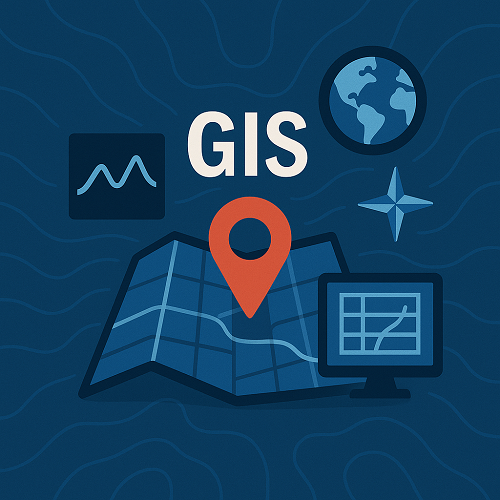TL;DR
- GIS technology in 2025 is driven by real‑time data integration and AI‑enhanced analytics.
- New satellite constellations are improving spatial accuracy and global coverage.
- The Esri User Conference 2025 emphasized GIS’s expanding role in sustainability and national security.
- Cross‑industry partnerships are enabling richer geospatial intelligence for enterprises and governments.
- Businesses leveraging modern GIS systems report faster insight generation and better operational agility.
What’s new right now
At the 2025 Esri User Conference, industry leaders showcased how GIS ecosystems are being combined with dynamic data environments, enabling predictive mapping and intelligent geospatial decision‑making. New collaborative partnerships between satellite data providers and GIS software leaders are enhancing the precision and availability of spatial datasets worldwide. Recent announcements from global space agencies highlight fresh satellite systems offering near‑real‑time Earth observation for infrastructure planning and climate analytics (NASA Earth Observatory). These developments solidify GIS’s place at the heart of digital transformation and security strategy.
Why it matters
For business executives, GIS delivers a unified spatial narrative—connecting location data to performance outcomes. Retail chains now use it to select sites with maximum demographic advantage, while logistics operators optimize routes amid changing traffic and environmental conditions. Technically, GIS serves as a bridge between spatial databases, analytics, and automation systems, creating a smarter layer of insight across assets and operations. With data security becoming increasingly critical, integrated geospatial intelligence platforms also strengthen situational awareness in national security contexts, helping agencies respond proactively to emerging threats.
Deep Dive: GIS Advancements Shaping 2025
1. AI‑Driven Spatial Analytics
Machine learning models embedded within GIS systems now automate anomaly detection and pattern recognition in urban development, climate forecasting, and resource allocation. The blend of AI and GIS no longer just visualizes data—it predicts outcomes. For example, utility companies analyze vegetation encroachment using high‑resolution imagery to plan maintenance before disruption occurs.
2. Real‑Time Sensor and Satellite Fusion
New satellite networks—such as low‑Earth‑orbit (LEO) constellations—are transforming GIS. Data collected from IoT sensors and satellite feeds are fused to provide continuous spatial intelligence. Hybrid platforms enable both terrestrial and orbital monitoring of assets, ensuring coverage from city streets to remote regions.
3. Interoperable Geospatial Platforms
As open standards mature, interoperability between public and private data sets has become a reality. Organizations can integrate environmental, socio‑economic, and logistical data within unified dashboards, improving cross‑sector collaboration. This multi‑source integration supports government transparency, resilience planning, and community innovation.
Comparison of Emerging GIS Approaches
| Approach | Primary Focus | Advantages | Typical Use Cases |
|---|---|---|---|
| AI‑Enhanced GIS | Predictive analytics and automation | Accelerates insight generation | Smart cities, power grid management |
| Cloud‑Native GIS | Scalable data processing | Flexible deployment, lower cost | Environmental monitoring, supply chain analytics |
| Mobile‑GIS Integration | Field data acquisition | Instant updates from remote teams | Disaster response, asset inspection |
| Geospatial Intelligence (GEOINT) | Security and defense applications | Enhanced situational awareness | Border monitoring, emergency planning |
Mini Case Study: Smart Infrastructure Planning
Problem: A mid‑sized metropolitan city faced expensive delays in utility expansion projects due to inaccurate asset location and outdated topographic data.
Approach: The city partnered with a GIS technology provider to deploy a cloud‑based spatial data repository integrating drone imagery, LIDAR scans, and municipal maps. Real‑time updates allowed engineers to detect conflicts between underground structures before excavation.
Outcome: Project turnaround time decreased by 35%, documentation errors fell by 60%, and average cost savings reached 1.2 million dollars annually. Improved accuracy also contributed to fewer service outages, enhancing public satisfaction ratings.
Implementation Checklist
- Define geospatial objectives aligned with business strategy.
- Audit current spatial data sources for accuracy and quality.
- Select a platform supporting AI and real‑time data connectivity.
- Develop interoperable data models based on recognized open standards.
- Train internal teams in spatial analytics and visualization tools.
- Establish data governance and security protocols.
- Monitor performance through measurable KPIs (speed, cost, coverage).
- Iterate strategy using insights from stakeholder feedback and field validation.
Frequently Asked Questions
1. How is GIS benefiting national security?
Modern GIS powers geospatial intelligence systems that track environmental, logistical, and tactical variables in real time, helping agencies anticipate risk and coordinate operations effectively.
2. What industries gain the most from newer GIS technologies?
Energy, transportation, agriculture, and urban planning sectors see rapid ROI from spatial analytics enabling predictive maintenance and optimized resource allocation.
3. Are open‑source GIS tools viable for enterprise use?
Yes. Open‑source frameworks such as QGIS and GeoServer provide flexibility and cost efficiency when coupled with robust data management policies.
4. What skills are vital for GIS professionals in 2025?
Data visualization, Python‑based automation, AI integration, spatial database management, and cloud architecture are core competencies demanded by employers.
5. How is the Esri 2025 Conference influencing innovation?
The event showcased real examples where GIS transforms sustainability goals into measurable actions, reinforcing its expanding strategic role across industries.
Conclusion
The evolution of GIS into a highly connected, intelligent platform marks one of the defining shifts in digital infrastructure. From urban simulation to defense logistics, GIS now orchestrates data, people, and decisions through spatial understanding. Organizations seeking a competitive edge should integrate next‑generation GIS systems to stay adaptable and data‑driven—explore our GIS services to begin your transformation journey.
